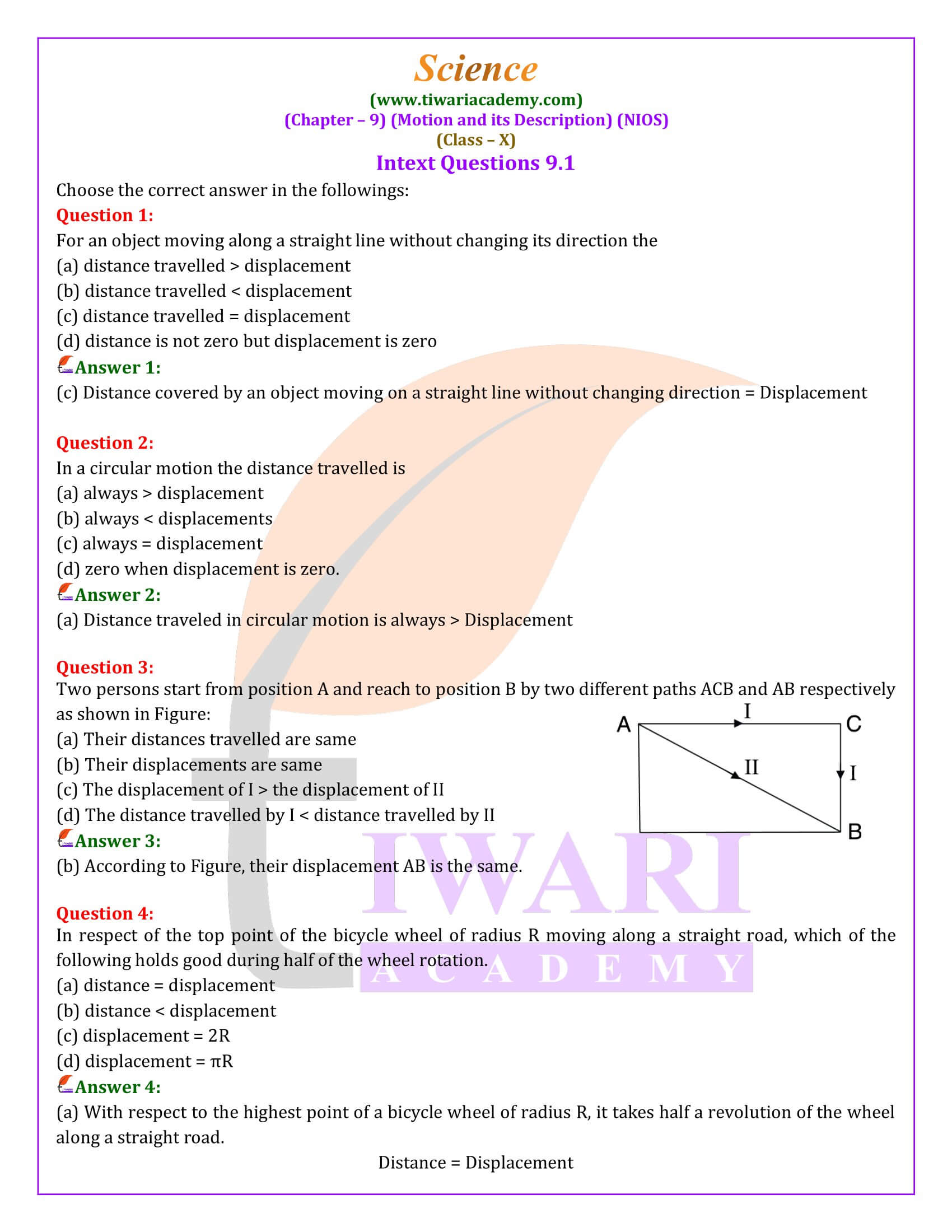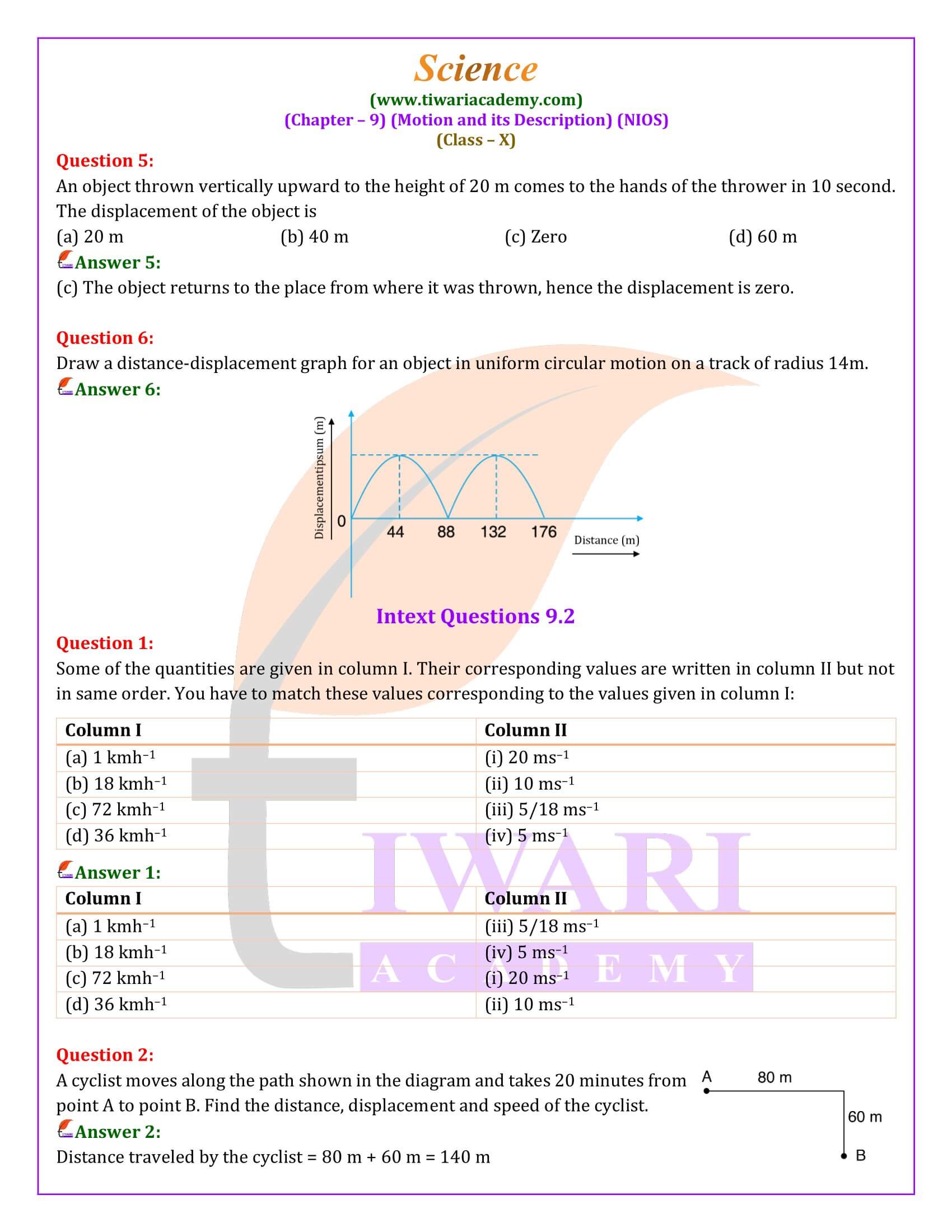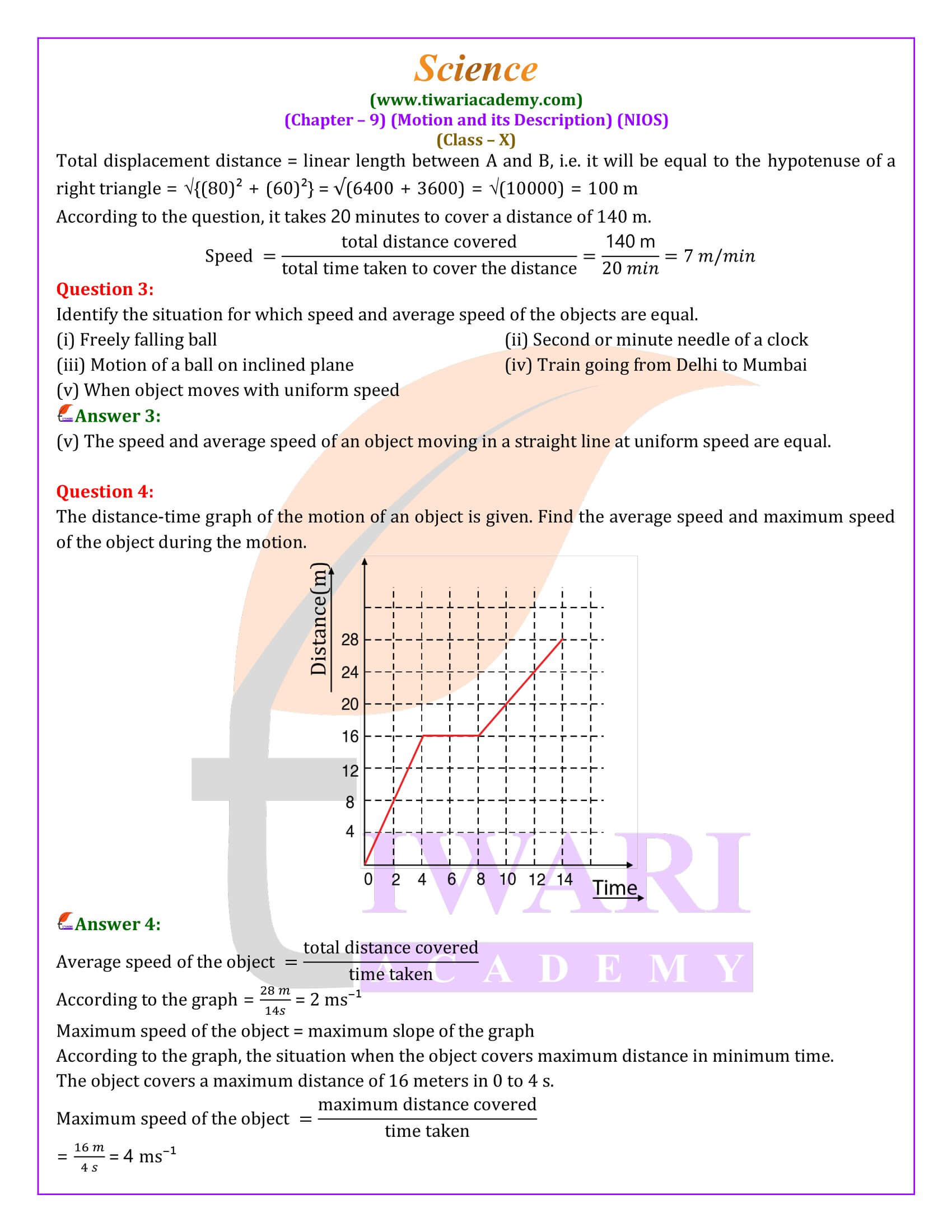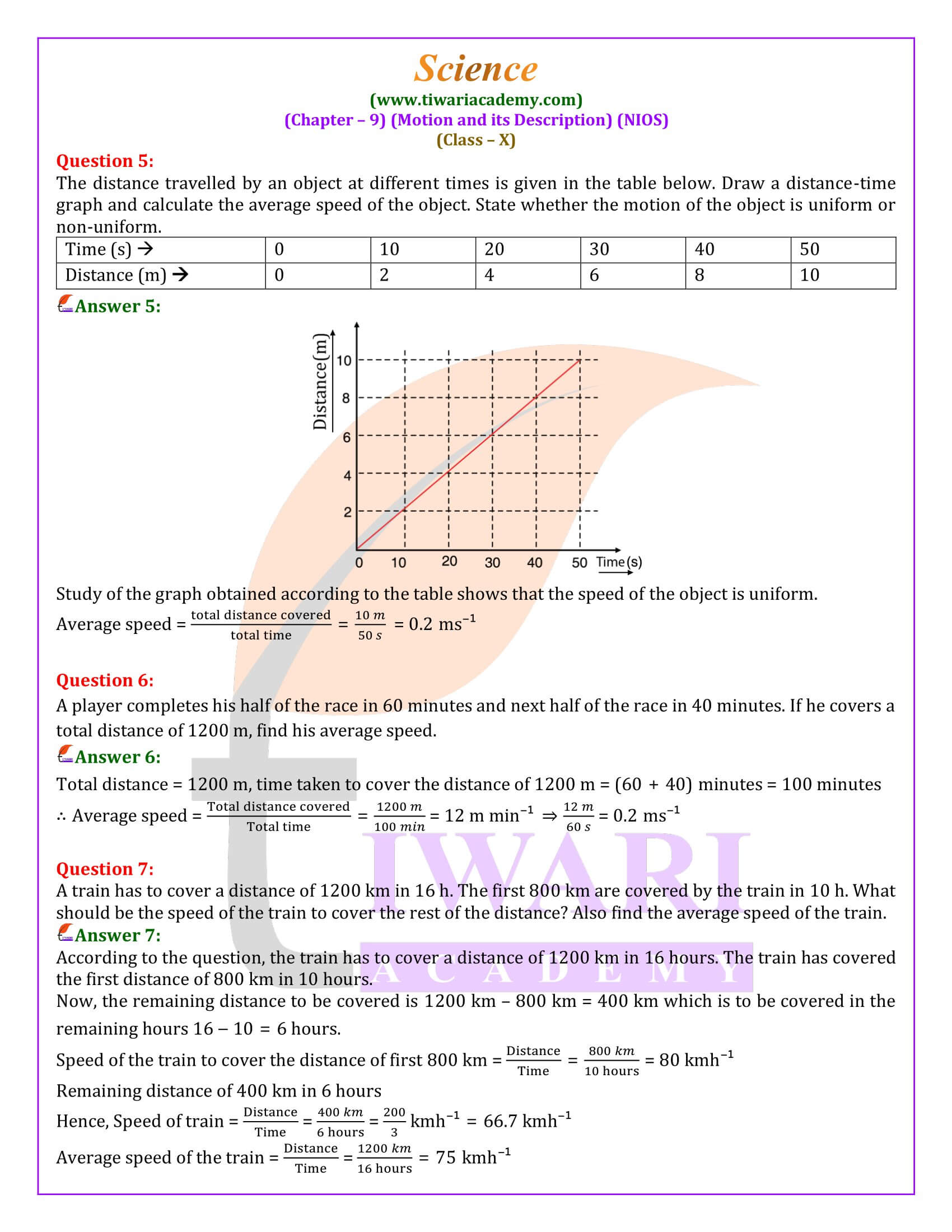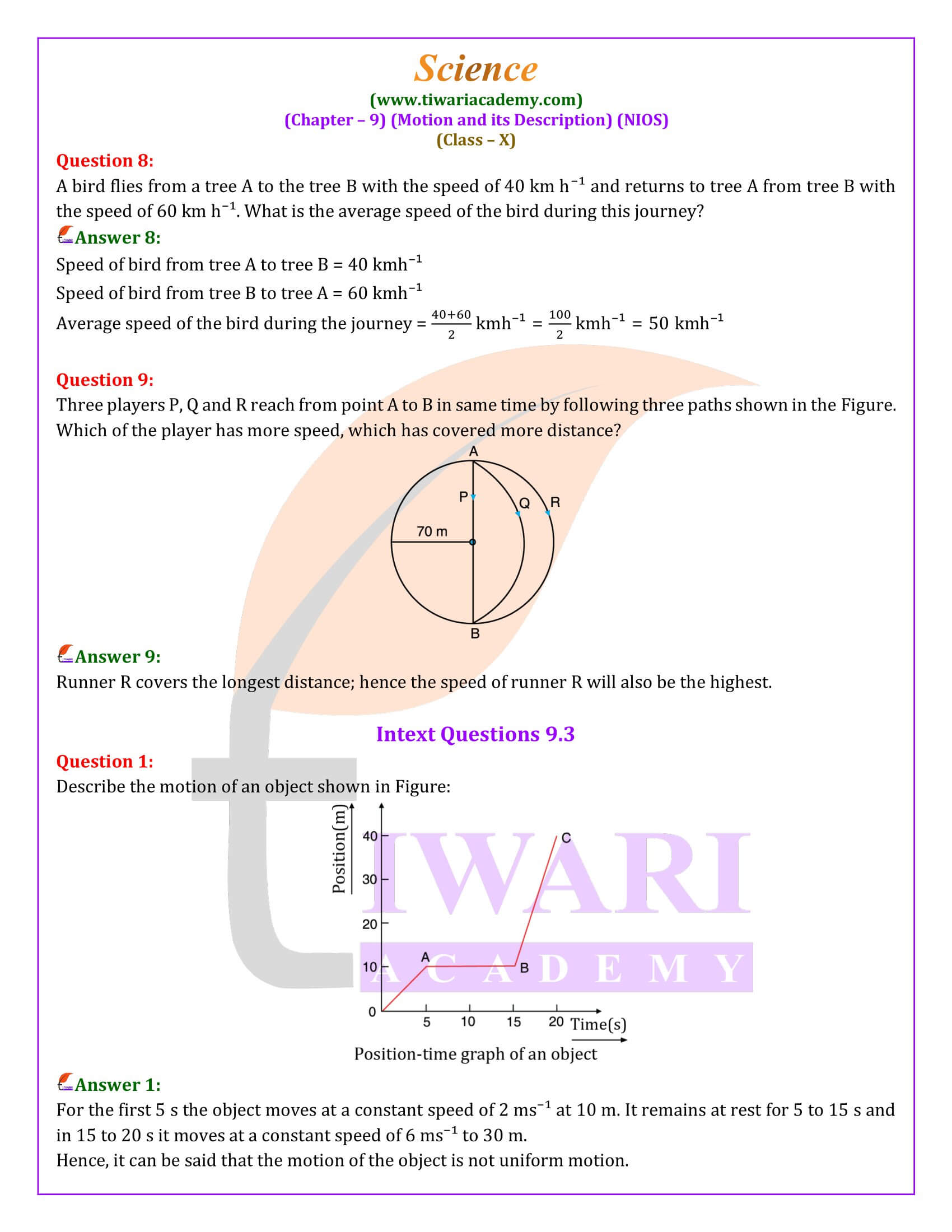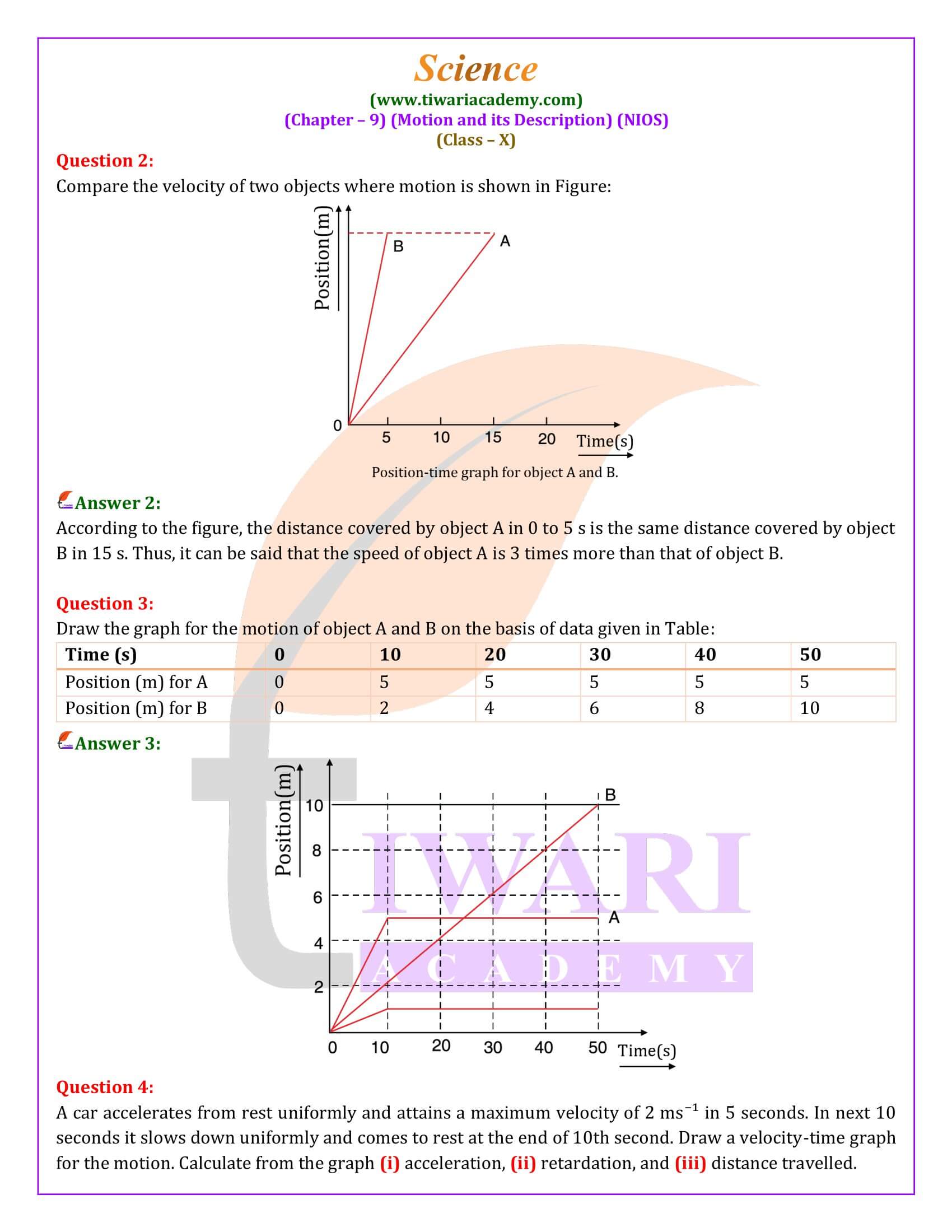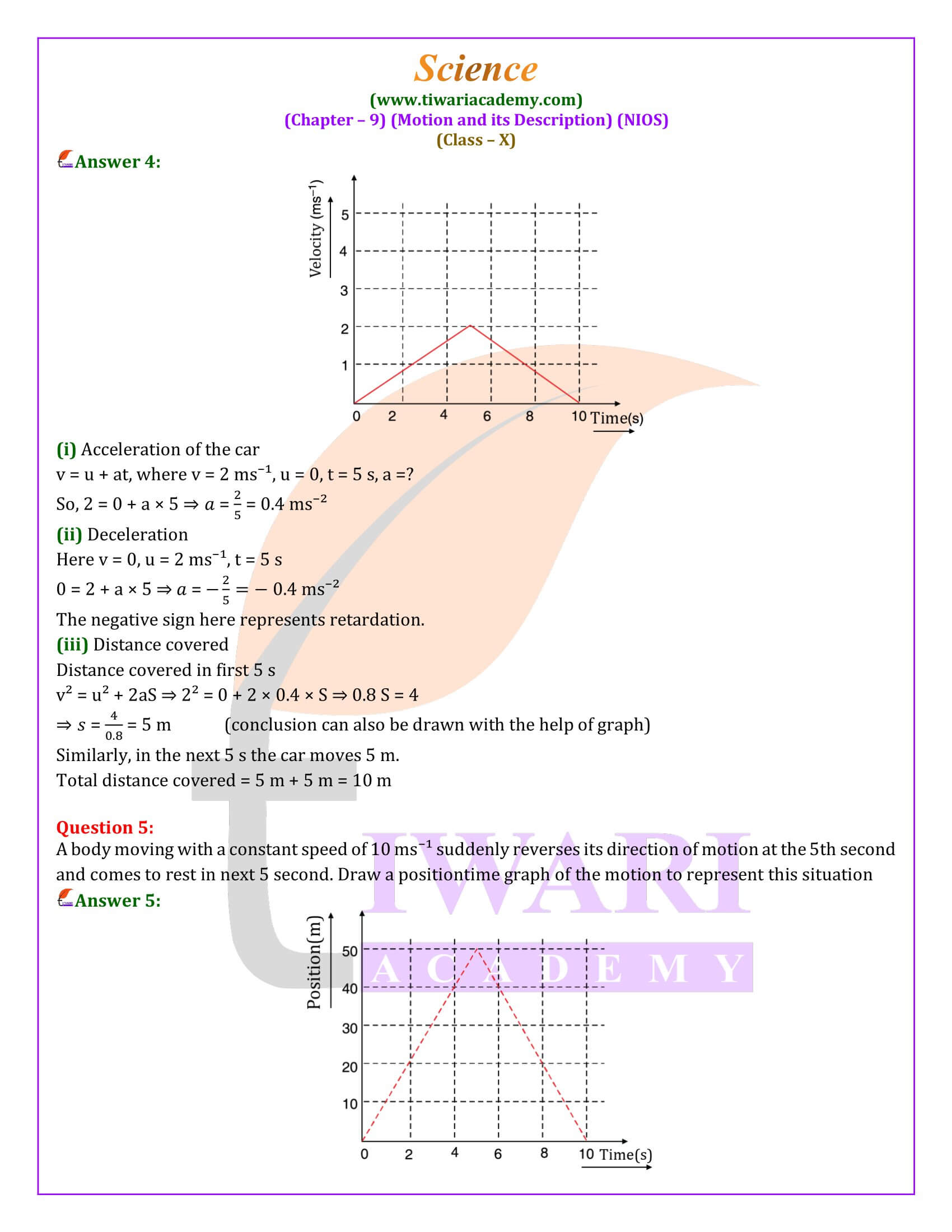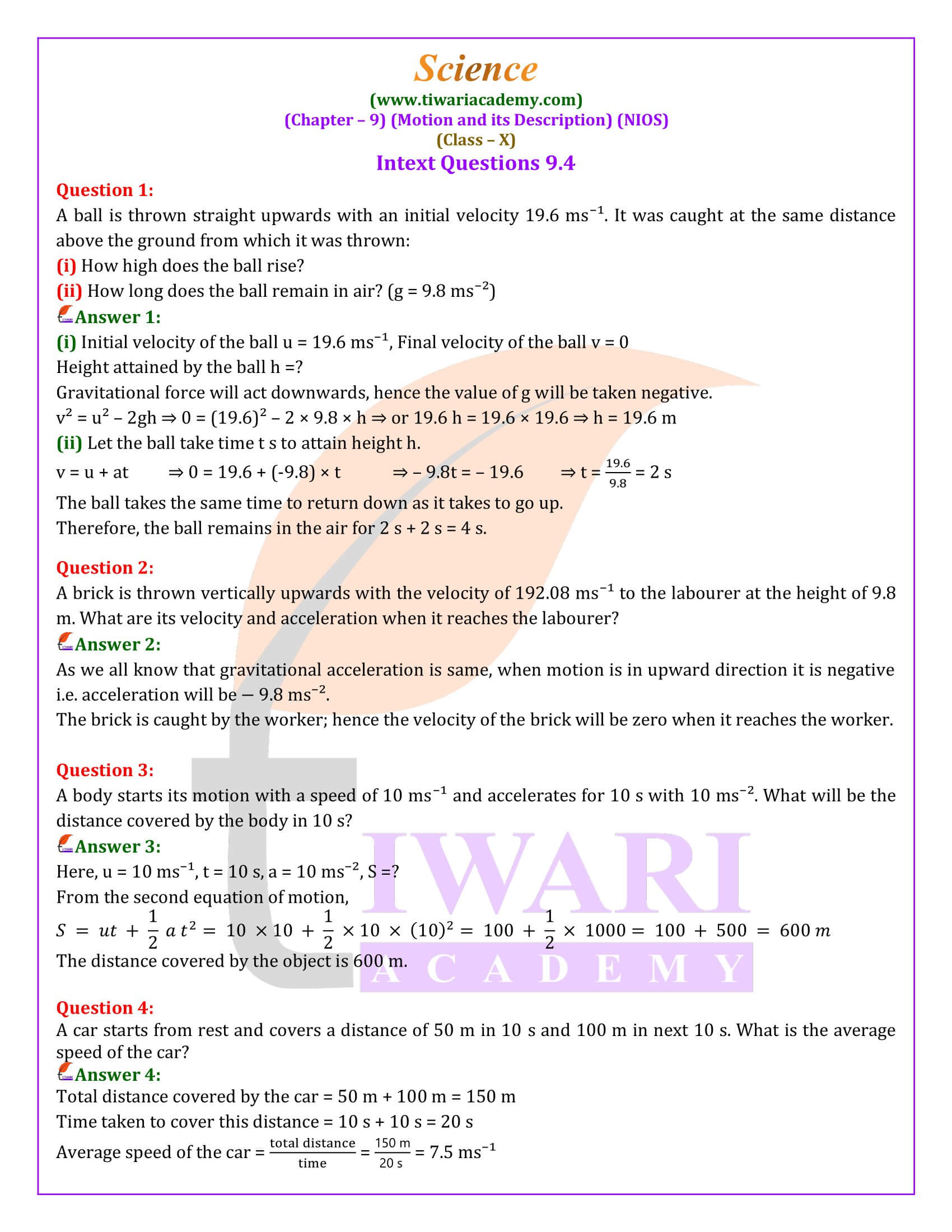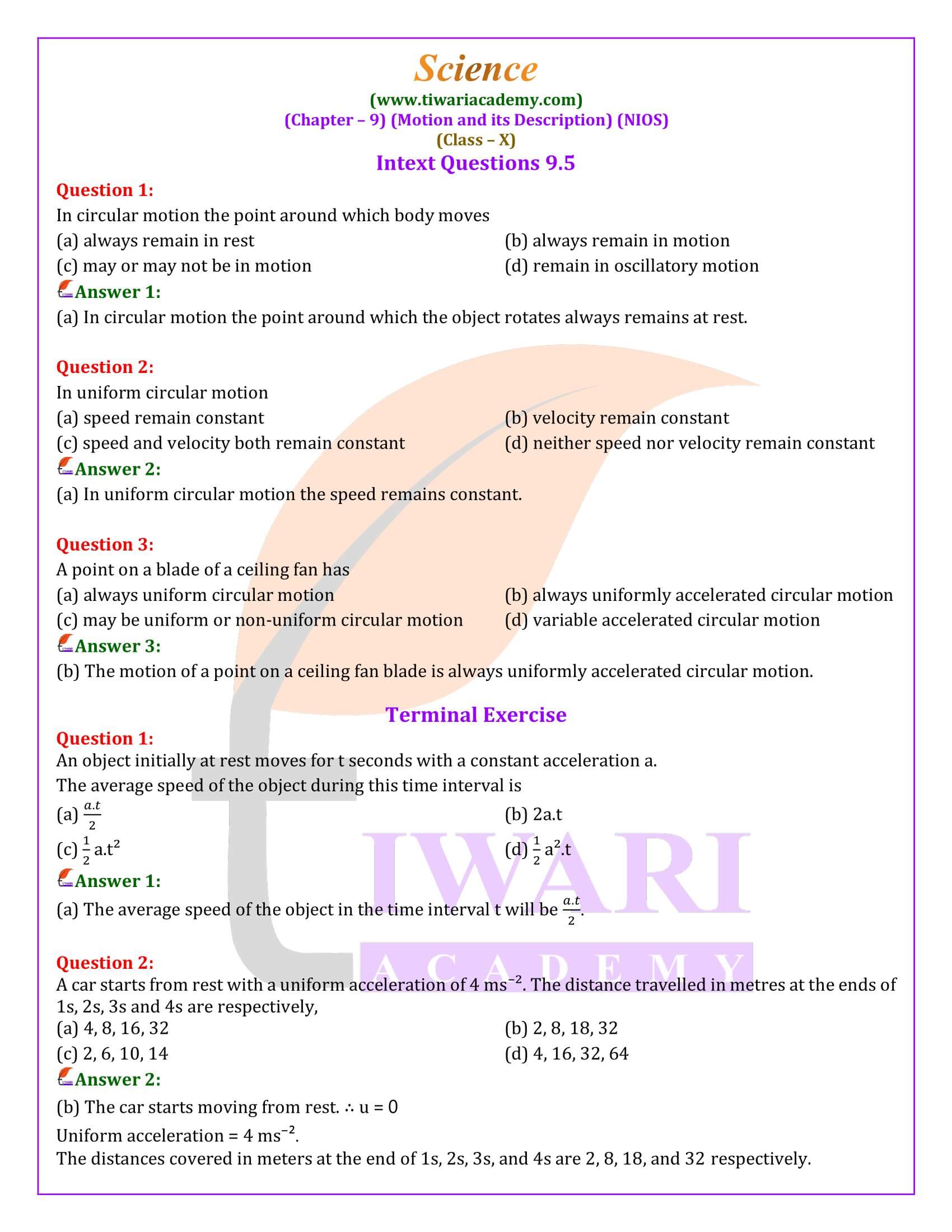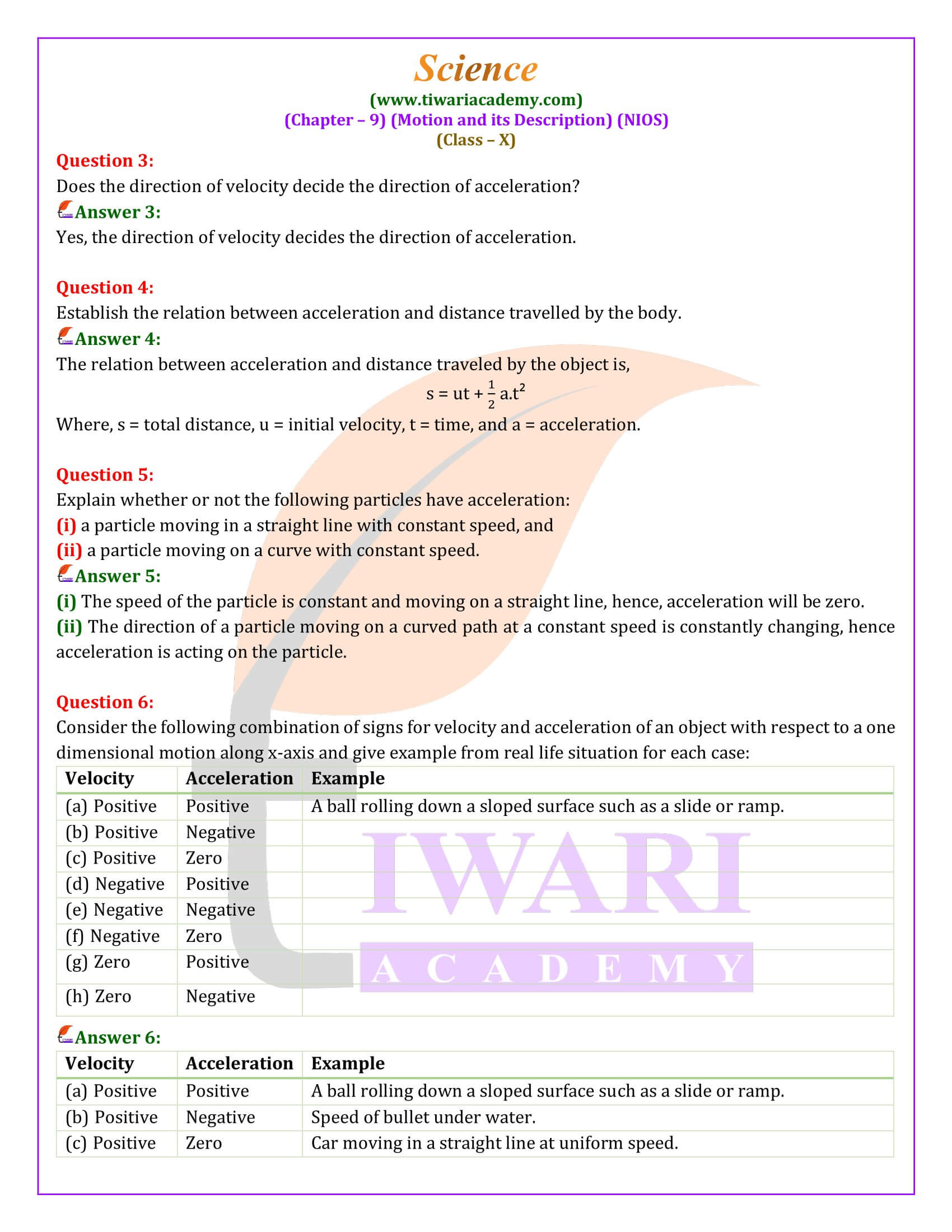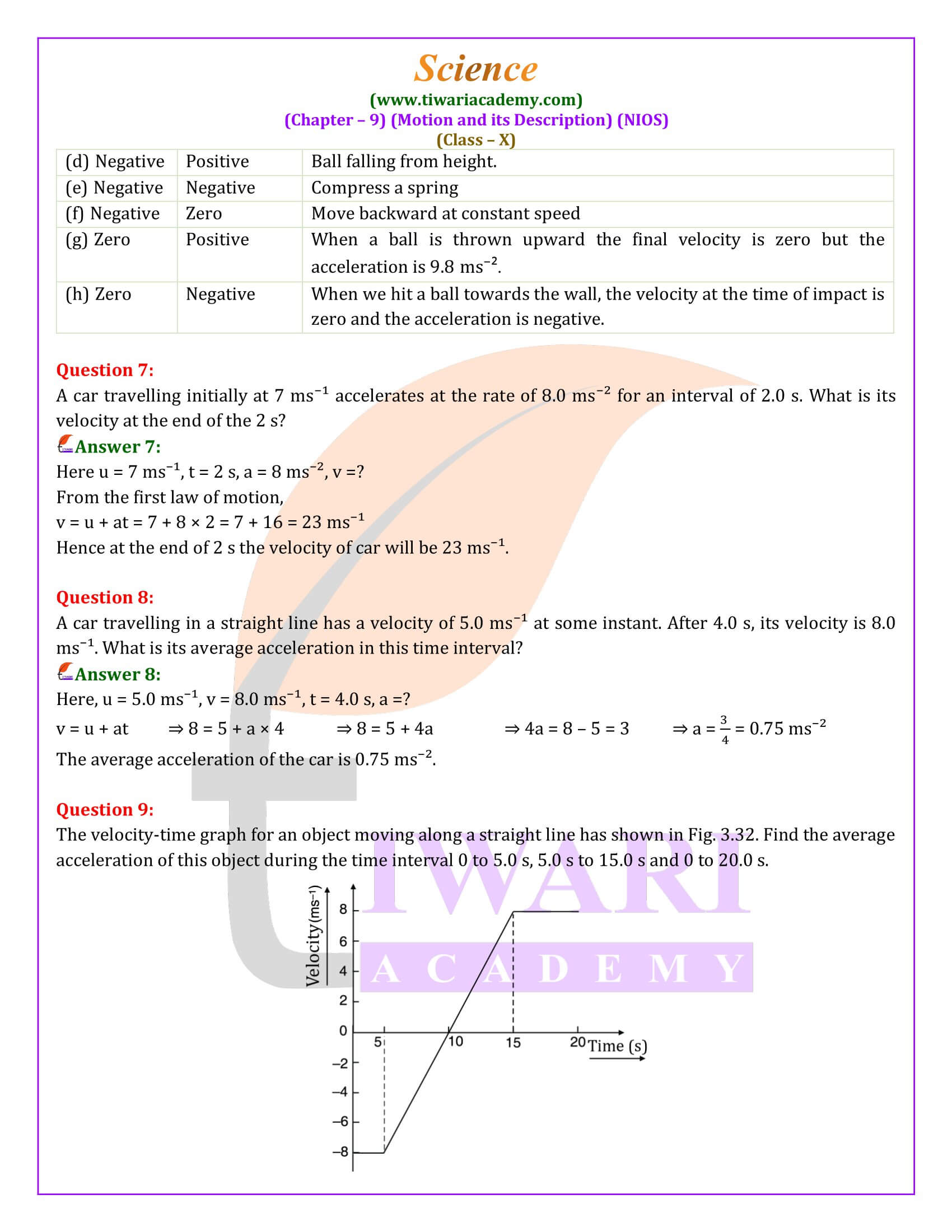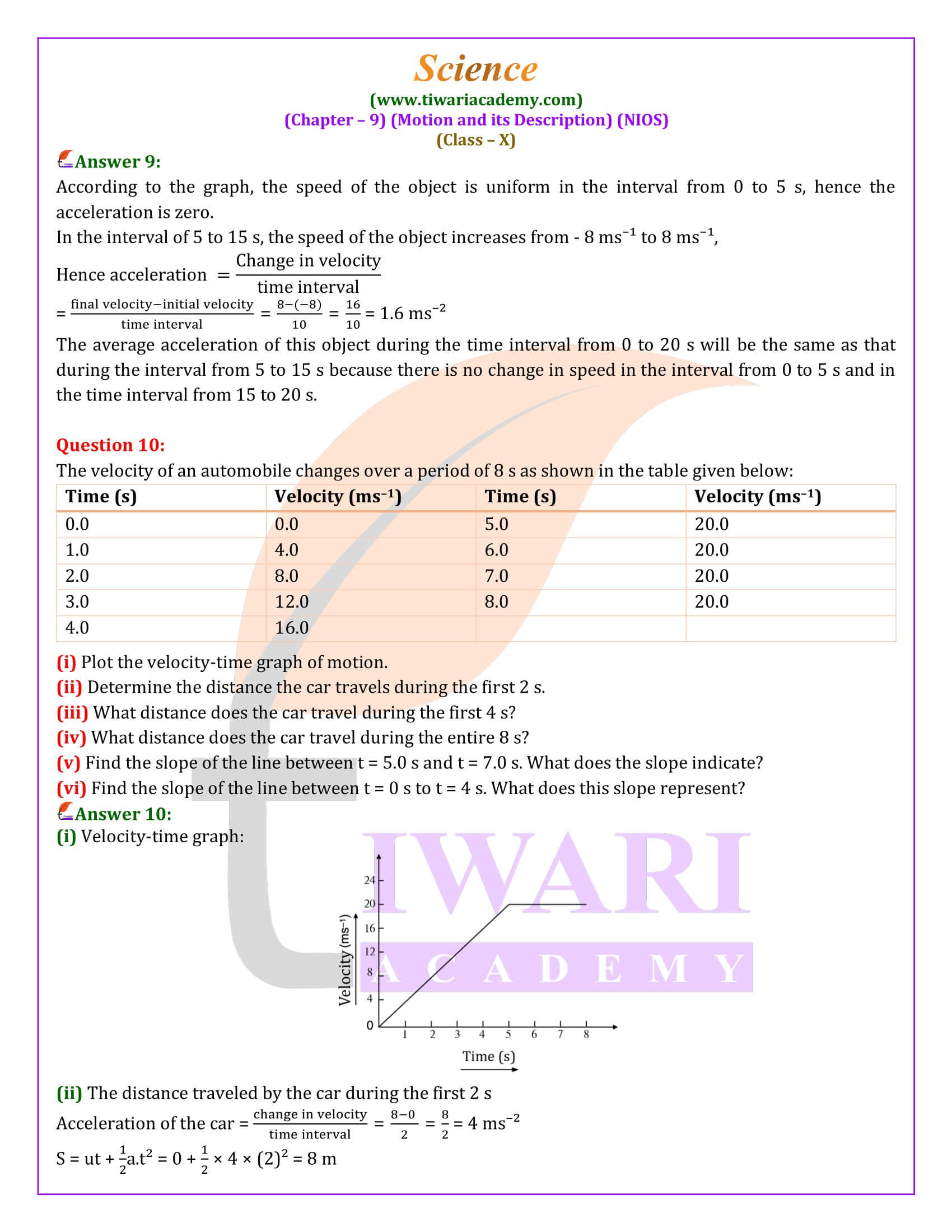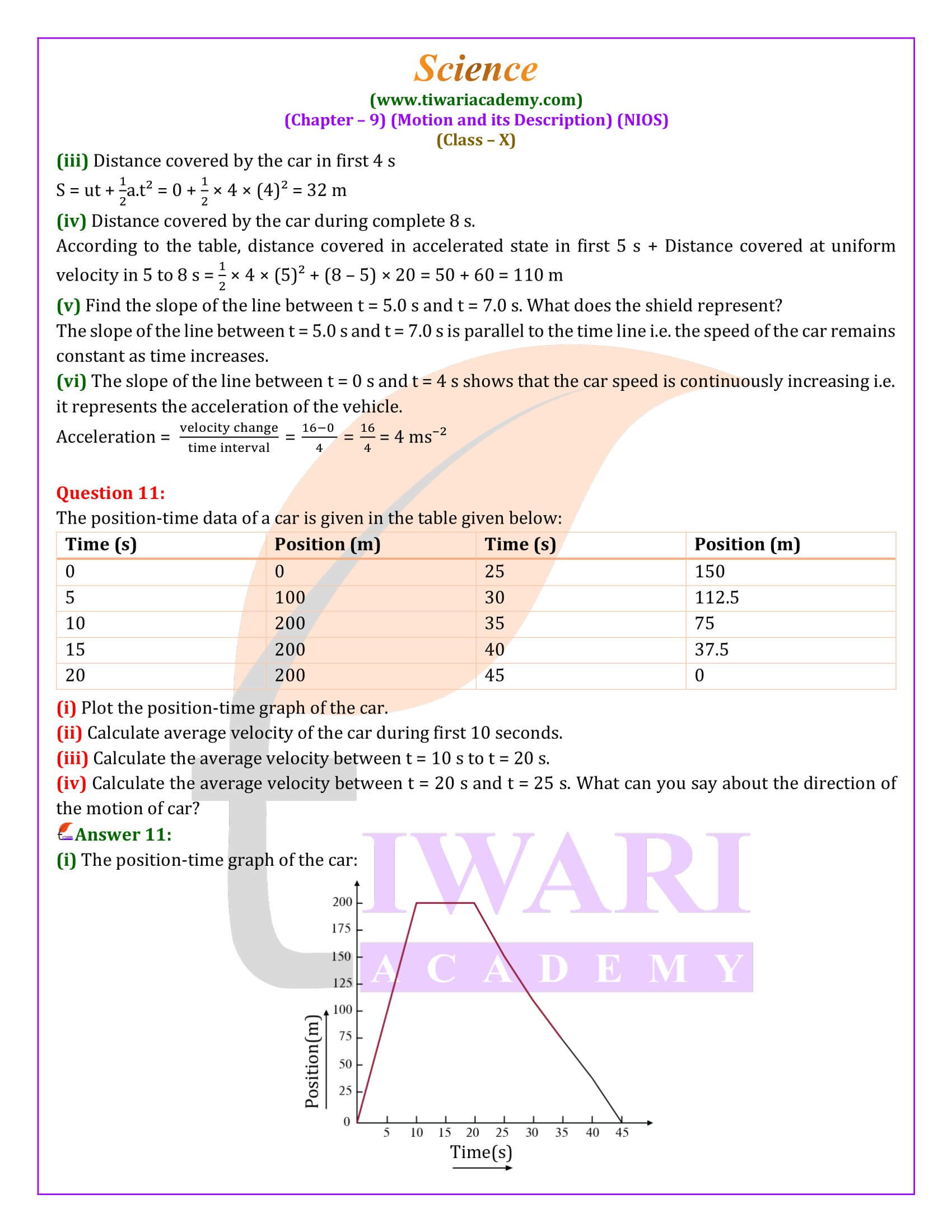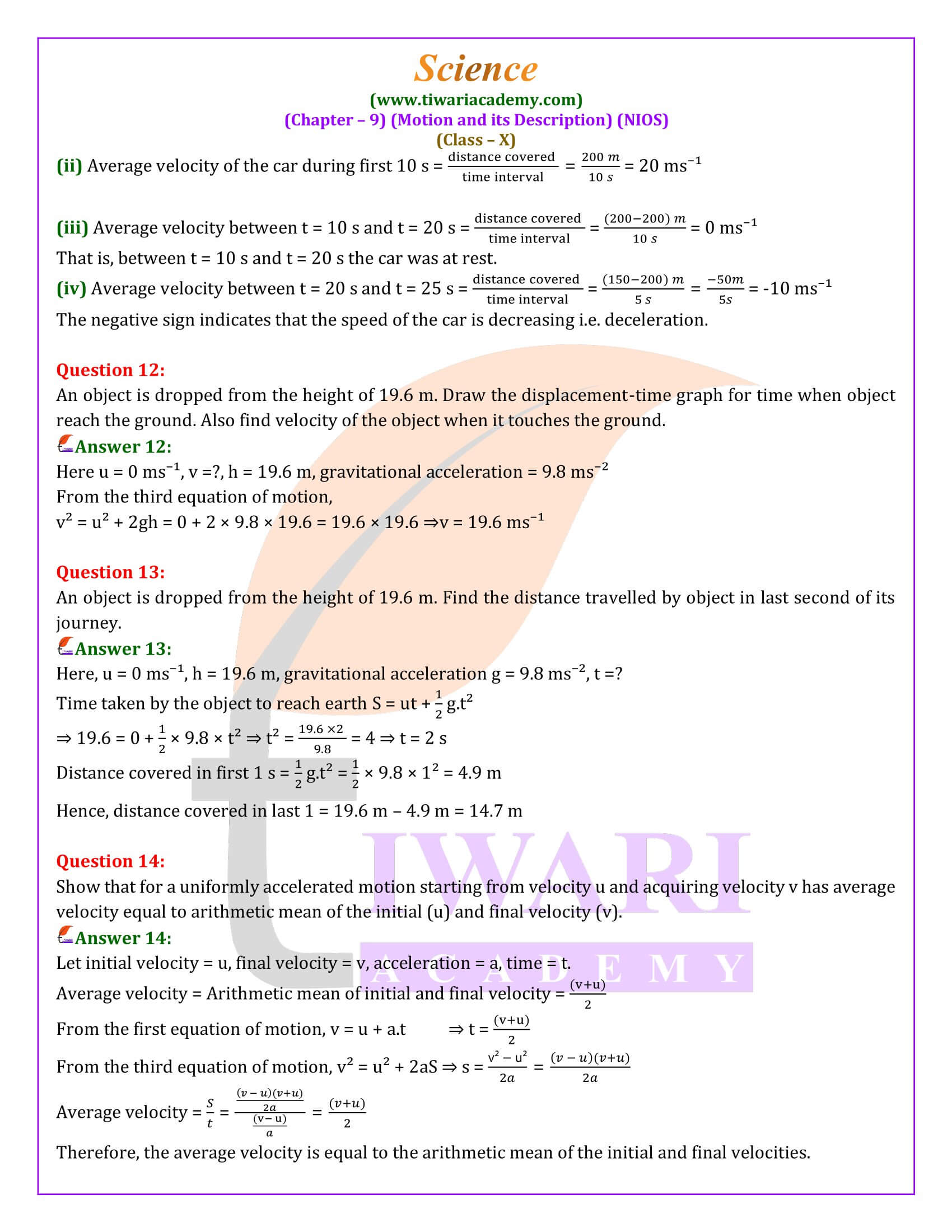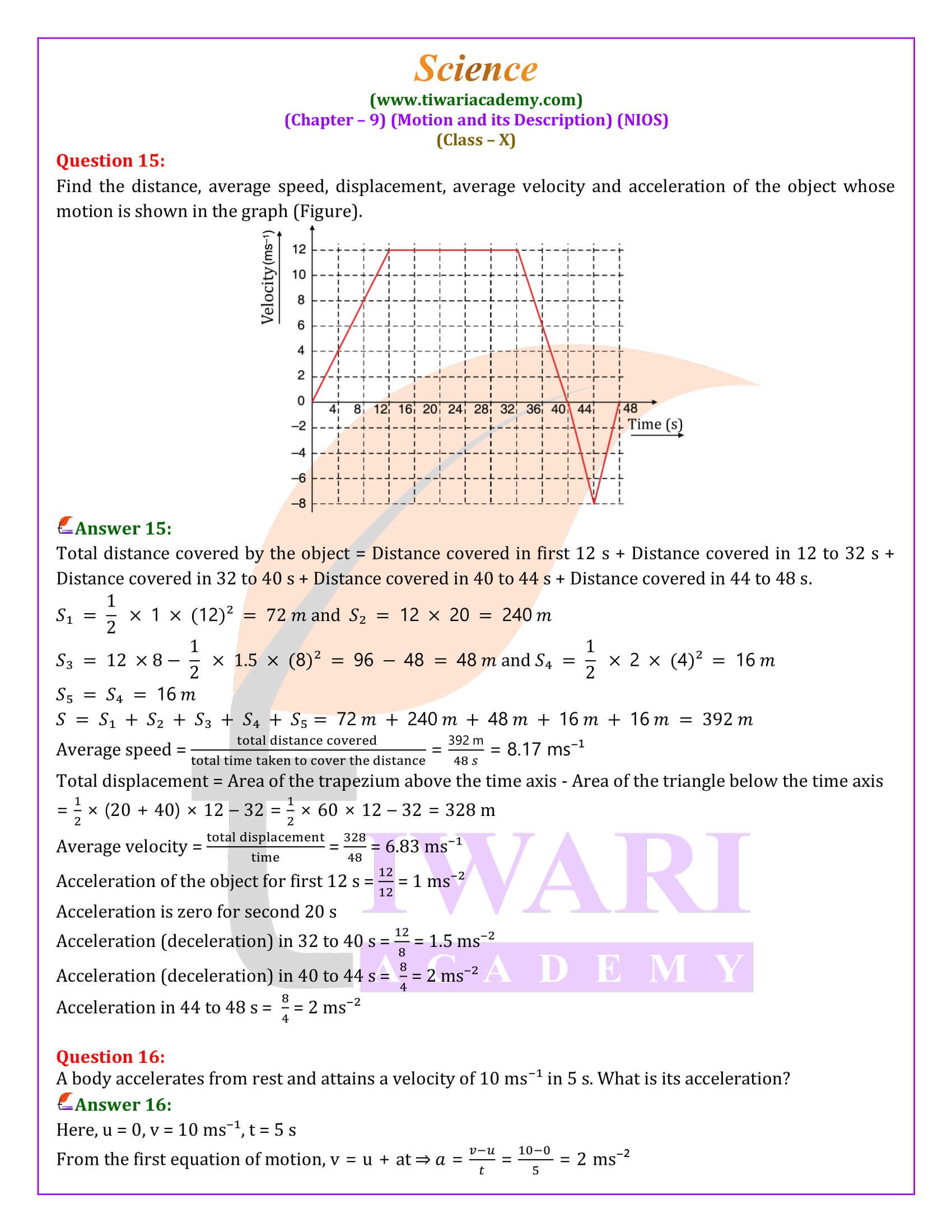NIOS Class 10 Science Chapter 9 Motion and its Description in Hindi and English Medium updated for session 2025-26. Get here the NIOS Science Chapter 9 Question Answers in simple format with intext questions.
NIOS Class 10 Science Chapter 9 Motion and its Description
Understanding Motion and Its Description
In the vast realm of physics, the study of motion occupies a foundational place, bridging everyday observations with the principles that govern the universe. The chapter “Motion and Its Description” delves into the intricate dynamics of moving objects, from the simplest forms of motion observed in daily life to the more complex phenomena that require a deeper understanding of physics.
The Essence of Motion
Motion, at its core, is the change in the position of an object over time. This simple definition unfolds into a complex study of how and why objects move. Observing the world around us, we encounter various instances of motion—cars racing down a highway, a bird gliding through the air, or even the relentless march of time as denoted by the moving hands of a clock. These observations raise fundamental questions: What causes motion? Is all motion alike?
The NIOS Science chapter 10 explores these questions by introducing the basic concepts of distance, displacement, velocity, and acceleration. These concepts serve as the building blocks for understanding motion in a structured and quantifiable manner. For instance, the difference between speed and velocity is not just semantic; speed is a scalar quantity representing how fast an object is moving, while velocity, a vector quantity, describes both the speed and direction of the object’s motion.
Types of Motion
The text categorizes motion into several types, including rectilinear, circular, rotational, and oscillatory motion. Each type of motion is defined by distinct characteristics and mathematical descriptions. For example, rectilinear motion occurs along a straight path, whereas circular motion follows a curved path around a fixed point. Understanding these differences is crucial for applying the correct principles and equations to analyze motion accurately.
Describing Motion with Graphs
One of the most powerful tools in physics is the use of graphs to describe motion. Position-time and velocity-time graphs offer visual representations of how objects move, providing insights into their velocity, acceleration, and the nature of their motion (uniform or non-uniform). Through these graphs, one can discern whether an object’s speed is constant, if it’s accelerating, or if it’s momentarily at rest—all of which are pivotal in studying motion dynamics.
Equations of Motion
The chapter 10 also introduces the fundamental equations of motion for uniformly accelerated motion. These equations link velocity, acceleration, time, and displacement in a coherent framework, allowing for the prediction of an object’s future position or velocity based on its current state. Understanding these equations is essential for solving a wide range of problems in physics, from the simple motion of a ball thrown in the air to the more complex trajectories of celestial bodies.
Circular Motion and Its Peculiarities
A special focus is given to uniform circular motion, highlighting its unique characteristic where an object moves at a constant speed but its velocity continuously changes due to the constant change in direction. This phenomenon introduces the concept of centripetal acceleration, which, despite an object’s constant speed, indicates that the object is indeed accelerating because its velocity vector is constantly changing direction.
Concluding Thoughts
“Motion and Its Description” is more than a mere chapter in a physics textbook; it is an invitation to observe the world with a curious and analytical mind. It challenges us to see beyond the surface of everyday occurrences, to question, and to understand the principles that govern motion. From the grand orbits of planets to the simple swing of a pendulum, motion connects the macroscopic universe to the microscopic world, making it a fundamental concept in the study of physics.
